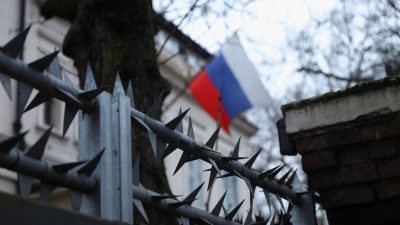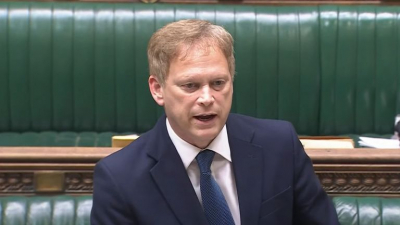My knowledge cut-off date is January 2022. As of that time, the Boycott, Divestment and Sanctions (BDS) movement was not designated as a terrorist organization by the United States or other major Western countries.
Amidst the echoing halls of academia, a wave of dissent surges as university campuses become the battlegrounds for impassioned protests and counter-protests. The focal point? The conflict in the Middle East, particularly the Israel-Hamas war, igniting fervent demonstrations across the United States.
In the heart of this tempest lies a tale of activism sparked by a tent encampment erected at Columbia University in New York. On April 17th, a chorus of voices demanding divestment from companies allegedly profiting from what they term "Israeli apartheid" echoed through the campus. This bold move, orchestrated by a cadre of pro-Palestinian activists, was both meticulously planned and spontaneously enacted. Elea Sun, a graduate student at Columbia, recounts the arduous planning process, only to witness the unforeseen explosion of support. The encampment, a symbol of resistance, drew the attention of authorities, leading to the arrest of 108 protesters on April 18th. Yet, far from quelling the flames of dissent, these arrests served as kindling, fueling a nationwide movement.
From the bustling streets of New York to the sprawling campuses of universities coast to coast, the call for action reverberates. At New York University (NYU), over 100 students and staff found themselves in handcuffs on April 22nd, a testament to the growing momentum of the protests. But these demonstrations are not monolithic; they are as diverse as the students themselves, reflecting a mosaic of voices and perspectives.
Yet, amidst this cacophony of activism, a discordant note emerges. Pro-Israeli counter-protests have surfaced, with some Jewish students expressing concerns over the rise of antisemitism and a sense of insecurity within their academic sanctuaries.
As the protests continue to unfold, one thing remains clear: the university campus, traditionally a bastion of learning and discourse, has become a battleground for ideals, ideologies, and the relentless pursuit of justice.
Amidst the echoing halls of academia, a wave of dissent surges as university campuses become the battlegrounds for impassioned protests and counter-protests. The focal point? The conflict in the Middle East, particularly the Israel-Hamas war, igniting fervent demonstrations across the United States.
In the heart of this tempest lies a tale of activism sparked by a tent encampment erected at Columbia University in New York. On April 17th, a chorus of voices demanding divestment from companies allegedly profiting from what they term "Israeli apartheid" echoed through the campus. This bold move, orchestrated by a cadre of pro-Palestinian activists, was both meticulously planned and spontaneously enacted. Elea Sun, a graduate student at Columbia, recounts the arduous planning process, only to witness the unforeseen explosion of support. The encampment, a symbol of resistance, drew the attention of authorities, leading to the arrest of 108 protesters on April 18th. Yet, far from quelling the flames of dissent, these arrests served as kindling, fueling a nationwide movement.
From the bustling streets of New York to the sprawling campuses of universities coast to coast, the call for action reverberates. At New York University (NYU), over 100 students and staff found themselves in handcuffs on April 22nd, a testament to the growing momentum of the protests. But these demonstrations are not monolithic; they are as diverse as the students themselves, reflecting a mosaic of voices and perspectives.
Yet, amidst this cacophony of activism, a discordant note emerges. Pro-Israeli counter-protests have surfaced, with some Jewish students expressing concerns over the rise of antisemitism and a sense of insecurity within their academic sanctuaries.
As the protests continue to unfold, one thing remains clear: the university campus, traditionally a bastion of learning and discourse, has become a battleground for ideals, ideologies, and the relentless pursuit of justice.
As the echoes of dissent reverberate across university campuses, a narrative of tension and confrontation unfolds, punctuated by clashes between protesters and law enforcement.
In response to reports of targeted harassment, campuses have become fortresses of protection, with police offering escort services to ensure the safety of students. Yet, despite these efforts, the nights of April 24th bore witness to a surge of arrests and injuries. At one institution, 108 individuals found themselves in handcuffs, while four officers sustained injuries in the fray. Videos circulating on social media captured the tumultuous clashes between police and pro-Palestinian protesters, underscoring the intensity of the confrontations.
Elsewhere, at the University of Texas, the scene mirrored that of a battleground as state troopers forcefully apprehended 33 student protesters and a news photographer. Intent on staging a peaceful walkout and march, the demonstrators were met with a swift and uncompromising response from university officials and law enforcement.
Similarly, at the University of Southern California, the night descended into chaos as vandalism and confrontations marred the protests, resulting in the arrest of 93 individuals by the Los Angeles Police Department.
In the wake of these events, universities grapple with divergent approaches in dealing with protesters. While some institutions opt for negotiation and dialogue, others swiftly resort to law enforcement to quell demonstrations. At Columbia University, site of the initial encampment, ongoing discussions and a strong police presence seek to maintain a semblance of order. Yet, elsewhere, the heavy hand of authority prevails, as police crackdowns and arrests punctuate the nights, leaving behind a landscape of shattered tents and dashed hopes for peaceful protest.
In this turbulent landscape, the clash between freedom of expression and the maintenance of order poses a formidable challenge for university administrators, as they navigate the delicate balance between upholding the rights of protesters and ensuring the safety of their campuses.
As the calendar inches closer to graduation ceremonies scheduled for early May, universities find themselves under mounting pressure to address the escalating protests that have gripped their campuses. While some, like the University of Southern California, have taken proactive measures by canceling their main ceremony due to safety concerns, others remain hesitant to disclose their plans.
Sky News' US correspondent, Mark Stone, stationed in New York to witness the protests at NYU, encapsulates the divergent perspectives fueling the unrest. He observes that while Gaza serves as the catalyst, Israel becomes the focal point of contention. Amidst the cacophony of voices, he notes entrenched positions, polarized views, and heightened emotions. The complexity of the underlying issues is simplified, often at the expense of nuance.
Even within the ranks of faculty, there exists a schism of opinion, with some Jewish professors expressing genuine concerns for their safety, while others interpret the events through a different lens. This diversity of viewpoints, Stone emphasizes, inevitably breeds extremism on both ends of the spectrum, complicating the delineation between free speech and hate speech.
Indeed, as definitions of antisemitism and Islamophobia are distilled and subject to interpretation, universities grapple with the delicate balance between safeguarding the principles of free expression and curbing the spread of hateful rhetoric. It is a tightrope walk, where the line between the two becomes increasingly blurred amidst the fervor of ideological clashes and the imperative to uphold a respectful and inclusive academic environment.
In navigating the tumultuous terrain of campus protests, universities find themselves at a crossroads, tasked with delicately balancing the principles of free speech and the imperative to maintain a safe and inclusive environment for all students and faculty. As graduation ceremonies loom on the horizon, the pressure mounts for institutions to address the unrest that has gripped their campuses. With divergent viewpoints and heightened emotions fueling the protests, the challenge lies in fostering dialogue and understanding amidst the din of discord. As the fine line between free speech and hate speech becomes increasingly blurred, universities must navigate this terrain with vigilance and sensitivity, ensuring that the voices of all stakeholders are heard while upholding the values of diversity, equity, and inclusion. In this charged atmosphere, the path forward demands a commitment to fostering constructive dialogue, respecting differing perspectives, and forging a shared vision of unity and tolerance within the academic community.







